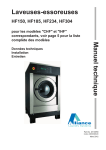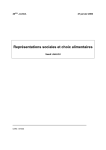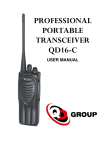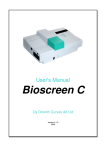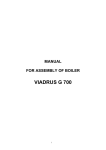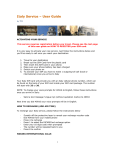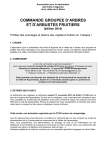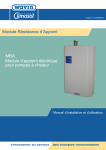Download duo boilers manual
Transcript
JASPI DUO 1, 2 & Solar Multifuel boilers INSTALLATION AND USER MANUAL WWW.JASPI.UK JASPI KNOWS HEATING Table of Contents TECHNICAL DATA ......................................................................................2 BOILER INSTALLATION .............................................................................3 General Instructions ..................................................................................3 Open Expansion Container Systems .........................................................3 Coated Expansion Container Systems ......................................................3 Driving Water System................................................................................3 Heating System ......................................................................................... 4 Electricity Connections ..............................................................................4 BOILER INTRODUCTION ...........................................................................5 Burner choice ............................................................................................5 Burner installation......................................................................................5 Burner adjustment .....................................................................................5 Wood side equipment installation ..............................................................5 BOILER USAGE ..........................................................................................6 Oil usage ...................................................................................................6 Burning wood ............................................................................................7 General guidelines ....................................................................................8 UK / IRELAND TECHNICAL HELPLINE 01392 247 343 IRL +44 1392 247 343 2 Figure 1. JASPI-DUO 1 and JASPI-DUO 2 boiler standard equipment: - Domestic hot water coil (flange) - combined mano-thermometer - cleaning equipment set - Termomix mixing valve R 1" - draft control R 3/4" - chimney extension liner - grate - adjustment plate - electric immersion heater PARTS: 1. Domestic hot water out ø22 mm 2. Cold water in ø22 mm 3. Boiling aggregate (output to accum.) R1 4. Expansion aggregate (return from acc.) R 1 5. Draft regulator aggregate R 3/4" 6. Fire management hatch 7. Air valve (primary air) 8. Filling hatch 9. Air valve (secondary air) 10. Cleaning hatch 11. 12. Drain 13. Burner hatch 14. Flame observation glass 15. Cleaning hatch 16. Analysis hole 17. Mixing valve R 3/4" 18. Heating output 19. Heating return 20. Adjustment panel 21. Burner thermostat 22. Immersion heater thermostat 23. Thermometer 24. Manometer 25. Wood loading hatch 255 x 100 mm 26. Leg 27. Sensor connection for TSK valve R 1/2" Model JÄSPIDUO 1 DUO 1 S DUO 2 DUO 2 S Boiler measures (mm) H A B C 1420 1420 1420 1420 720 720 720 720 610 610 760 760 955 955 955 955 Wood chamber meas. (mm) Width Depth Height 250 250 250 250 380 380 530 530 700 700 700 700 oil Output (kW) Water Wght. wood electr. sp. (L) (kg) 20 20 25 25 20 20 25 25 6 6 160 160 235 235 300 300 365 365 Technical data: Recommend. accumulator: Recommend. chimney: 3 0,5,,,2,5 m (e.g. JÄSPI-GTV-500) 2 brick ~ 250 cm steel ø150 mm Recomm. chimney height: min. 5 metres Hot water coil: 200 l/40 °C/10 min. (Duo-1) 200 l/45 °C/10 min. (Duo-2) Structural pressure: 1,5 bar Max temperature in usage: 100 °C ASSURANCE OF CONFORMITY WITH EC-STANDARDS This assurance applies to our manually-operated boilers functioning on solid fuel: JÄSPI Tupla, Triplex, ECOPUU, YPV 40. We assure that the abovementioned aggregata are in conformance with the essential safety requirements of the EC directive 97/23/EC, article 3, subsection 2.3. The fulfilment of the essential safety requirements, found in the directive appendix 1, articles 2.10, 2.11, 3.4 and section 5, subsection a) and d) is clarified in the aggregata’s usage and installation instructions. The manufacturing of the aggregata is done in accordance with good engineering practices. In Raisio, Finland 5.6.2002 Raimo Aaltonen General Manager 3 GENERAL INSTALLATION INSTRUCTIONS Install the boiler in an upright position on an incombustible surface in a dry boiler room. Observe sufficient installation and maintenance space around the boiler. Boiler connections to the network are done so that the piping is not strained. Install necessary lock valves in the network for maintenance purposes. During the network pressure test the boiler pressure must not exceed 1,5 bar. After filling, the pipe connections and sealing are carefully checked to avoid damage to the boiler and electric appliances from a possible leak. The free combustion air opening, that is lead to the boiler room, should be at least the size of the chimney aperture (150 mm x 150 mm). The boiler is connected to the chimney with the chimney extension liner (standard equipment). Joints must be carefully compressed with mineral wool, fibre glass braid or equivalent to avoid the weakening of traction. The distance between the boiler and the duct can be up to several metres. In that case the connecting pipe should be in a horizontal or rather ascending position and the cross-section must conform to chimney recommendations. The pipe should be isolated and the joints sealed. Possibility to sweep the chimney should also be ensured. - - INSTALLATION Expansion system Coated expansion container system On top of the boiler in the boiling aggregate there should be a reliable (without a clamping device) 1.5 bar safety valve whose blasting output should correspond to the amount of (water) vapor that is produced at maximum output, 20 kW (Duo 1) / 25 kW (Duo 2). Use of two safety valves is recommended. The safety valve is installed unclamped to the boiler’s boiling aggregate. The valve’s exhaust pipe should not be reduced from it’s nominal size and it should be directed thus, that the discharged vapor does not damage people or property. The active volume of the coated expansion boiler should be at least 5% of the facility’s total water quantity. In practice it should be dimensioned according to at least 7%. Open expansion container system On top of the boiler an unlocked sleeve pipe should be led to the expansion container. The container’s minimum volume must be 5% of the facility’s total water quantity. The container’s overflow pipe should be mounted descending. The vapor discharge pipe should be continuously ascending and it’s pate directed thus, that it does not damage people or property. Driving water system The cold water pipe connected to the hot water coil is equipped with a valve group, including a closing valve, a backlash valve and a 10 bar safety valve. The hot water thermostatic mixing valve is mounted between the cold and hot water aggregates. A boiling prevention valve must be connected to the hot water coil to block overheating when wood is being burnt. Valve connection guidelines are shown in figure 2. Figure 2. Connecting the boiling prevention valve (e.g. Jäspi-TSK) to the driving water coil. 1. Valve group 2. Boiling prevention valve 3. Sensor 4 Heating system Mixing valve The boiler’s standard equipment includes a 4-way mixing valve which is connected to the flange on top of the boiler. The pipe entering the radiator network is connected to the left (seen from the front) and the return pipe to the right side of the valve. The temperature of the outflow water that is needed in the network varies considerably. Thus we recommend automating the functioning of the mixing valve. Circulating water pump The best location for the circulating water pump is the radiator network return pipe. To ensure the pump’s good functioning, removing the accumulating air from the network should be taken care of. Energy accumulator The boiler should be connected to an energy accumulator (with volume 500-2 500 litres) if firewood burning is frequent. A reliable loading valve (e.g. Termovar 25) should be used in the coupling which ensures that the returning water temperature does not fall below 60 °C. Electricity connection The boiler’s electricity connections must only be performed by a qualified electrician. The connections are made according to the following scheme. FEED 230-240V 1~ FROM MAINSWITCH OF HEATING ELEMENT ***6kW 30A 3x10mm° **4kW 20A 3x6mm° * 2kW 10A 3x1,5mm° FEED FROM BURNER SWITC MAX.240V/10A S3 BURNER CUT-OFF THERMOSTAT c H THERMOSTAT 12/U 22/V c BURNER THERMOSTAT 2000W S2 2000W S1 31/T 2,5mm° 2000W IMIT 2 TG 1 * 21/S CUT-OFF THERMOSTAT X1 4mm° Signal lamp 1 10mm° *11/R * 6mm° N L1 1 2 3 X2 N L1 BURNER 6mm° HEATING ELEMENT (SPL 3x2kW 230V) 32/W 5 BOILER INTRODUCTION When introducing the boiler, it should be ensured that the system is filled with water and air is removed. The tightness of the piping should also be checked to avoid leaking damage to the system. The manometer must be observed in conjunction with the usage of the apparata. In coated expansion container systems the pressure should be above 0,5 bar (but below 1,5 bar when hot). Furthermore, check that the opening pressure of the safety valve is 1,5 bar. Burner choice All modern oil burners that are equipped with pre-heating and designed for 1.4-2.3 kg of oil/h, are suitable. These values are reached at 0,5 US gall/h with a 60° nozzle when oil pressure is 6-14 bar. Suitable burners include e.g. Oilon Junior Pro LJ 10, (LF-1) and Bentone B 10 FUV. Burner installation The burner can only be installed by a person qualified and entitled to the job. An installation and usage manual is delivered with the boiler and it should be followed at all times. Burner adjustment The exit gas values, required for burner adjustment, are measured from the analysis hole in the duct connection piece. The analysis is taken on the first time of usage and the burner is adjusted accordingly. Thus unnecessary smutting is avoided if ventilation is not sufficient. The final adjustment is performed when boiler water reaches +75 °C. In oil usage the adjusted values are appropriate when the smut value is 0-1 in the bachrah scale, O2 % 3,5…4,5, CO2 > 12 % and CO < 30 ppm. Once the burner is correctly adjusted, the boiler needs sweeping approx. once a year! NOTICE! Incorrect burner adjustment can damage the burner hatch and exit gas controls. In normal boilers the exit gas temperature is approx. 140 °C. If this temperature is too low for the chimney material, the temperature can be raised by removing some of the hindermost plates of the exit gas controls (nr. 4, figure 3) in the convection part. Removing one plate is equivalent to approx. a 10 °C rise in exit gas temp erature. Wood part gear The traction control is installed in the traction control aggregate (nr. 5, figure 1) and the damper (nr. 7, figure 1) according to instructions. The cheek plate (only in Duo 2 boiler, nr. 7, figure 4) reduces the grate surface and it is installed in a 45° angle to the boiler’s side on to p of the grate (to the right side, when looking from the front). 6 BOILER USAGE OIL USAGE The burner control thermostat is set in the proximity of 75 °C or higher, thus producing more hot driving water. Too low temperature in the boiler water (below 70 °C) will produce condensation water on the fire surfaces and damage the boiler. When heated with oil, the control thermostat of the electric immersion heater is set to 60 °C (in Duo 1 S and Duo 2 S models). If the boiler has not been equipped with an electric immersion upon delivery, it can also be installed later (contact manufacturer). Figure 3. Oil side 1. Oil side cleaning hatch 2. Wood/oil side cleaning hatch 3. Burner hatch with flame observation glass 4. Exit gas control (1 piece) Maintenance When the burner is correctly adjusted, the boiler needs sweeping approx. once a year. (see adjustment values, page 4). Before the oil chamber can be cleansed, power must be switched off from the burner’s main switch. Then the oil burner hatch (nr. 3, figure 3.) and cleansing hatch (nr. 1, figure 3) are opened and the exit gas control, found behind the latter hatch, is removed (nr. 4, figure 3). The chambers are cleansed by removing and extracting the smut from the surfaces. After cleansing the exit gas control is replaced, the hatches are closed and power is switched back on. 7 BURNING WOOD JÄSPI-Duo operates with the top burning -principle and burning is enhanced with a patented burning technique. Therefore the exit gases are cleaner and efficiency is higher. The boiler can be most efficiently exploited by burning wood when connected to a 500-1500 litre accumulator. Ideally the firewood should be approx. 30 cm (Tupla 1) or 50 cm (Tupla 2) long with a diameter of 10-12 cm (cleaved). Lighting First ensure that the damper is in a horizontal position. Then the plate’s adjustment lever (nr. 11, figure 1) has been pushed back. The fire is lit in the boiler with chips (on the bottom) and then firewood is added. Then the fire control plate (nr. 3, figure 4) should be pulled in the front position and before closing the filling hatch (nr. 5, figure 4.) it is pushed to the rear position with the cleansing stick. (Fire can also be lit by filling the chamber with firewood and placing the chips underneath the topmost wood. Then the fire control plate (nr. 3, figure 4) can already be pushed back.) Adding firewood Avoid unnecessarily opening of the filling hatch. Add firewood when the previous filling has finished burning. The damper (nr. 10, figure 4) is closed before opening the filling hatch and the fire control plate is pulled to the front position with the cleansing stick. When burning wood, the fire control plate should be pushed back. Burning air To ensure good burning, it is important to burn with sufficient draft. Draft in the boiler is adjusted with the draft adjuster thus, that draft in the charging space is sufficient to ensure clean burning. It should also be made sure that secondary air is provided from the air valve (nr. 6, figure 4). The valve should be approx. 5 mm open. Figure 4. Wood side 1. 2. 3. 4. 5. 6. 7. 8. 9. 10. Cleaning hatch Funnel Fire control plate Coal grating Filling hatch Air valve (secondary air) Cheek plate on the right side 1 piece (only DUO 2) Grate Fire management hatch Draft valve (primary air) Cleansing Cleansing the wood side is done from the front of the boiler. Most important is to keep surfaces behind the cleansing hatch (nr. 1, figure 4) clean. The fire surfaces can be cleansed by brushing and scraping off the accumulated smut through the cleansing and filling hatches. 8 Remove combustion residue through fire management hatch. Notice! The cleanness of the boiler’s fire surfaces is important to keep the high efficiency. GENERAL GUIDELINES The water level indicator (manometer) should be checked regularly to ensure the sufficiency of water in the system. Simultaneously it should be visually checked whether there are any leaks in the piping. The boiler can easily overheat in firewood use. This can cause the burner or immersion temperature limiter to go off. Once the boiler has somewhat cooled off (temperature approx. 80 °C), the released temperature limiter can be retuned by pressing the temperature limiter (nr. 21 / 24, figure 1) button (strongly pressing with a narrow-tipped stick) on the control panel.









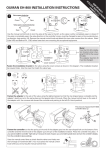
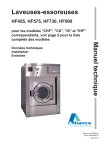
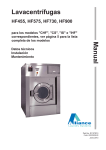

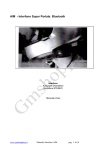
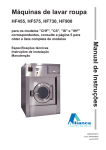
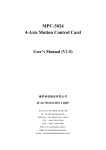
![Manuel d`utilisation MRA 2 V1.2 240909.p[...]](http://vs1.manualzilla.com/store/data/006373886_1-5635bdf4271b517061cca2d643252436-150x150.png)


